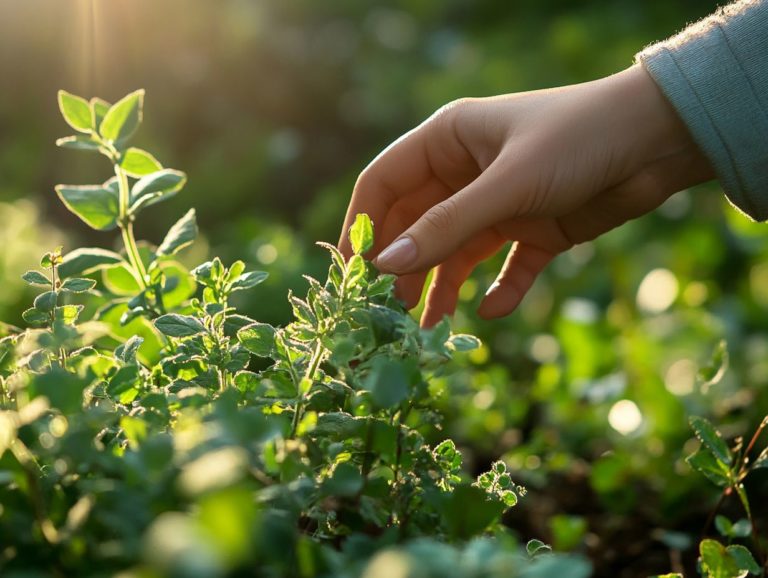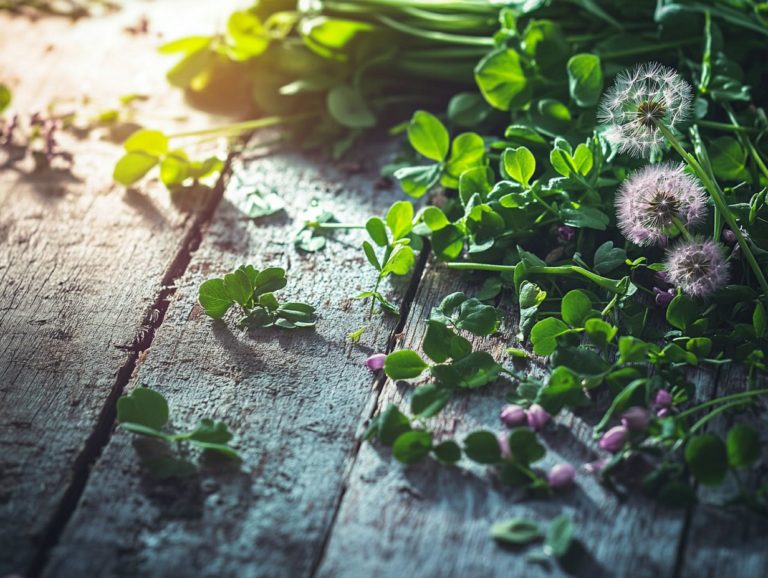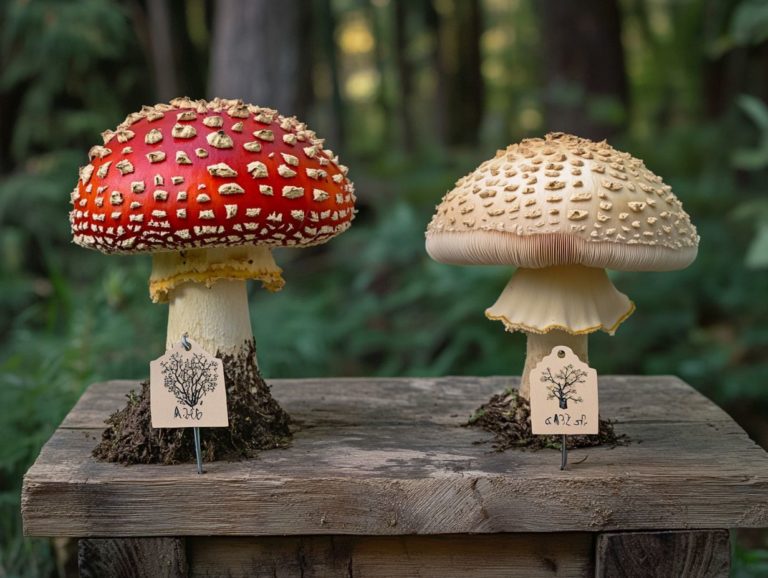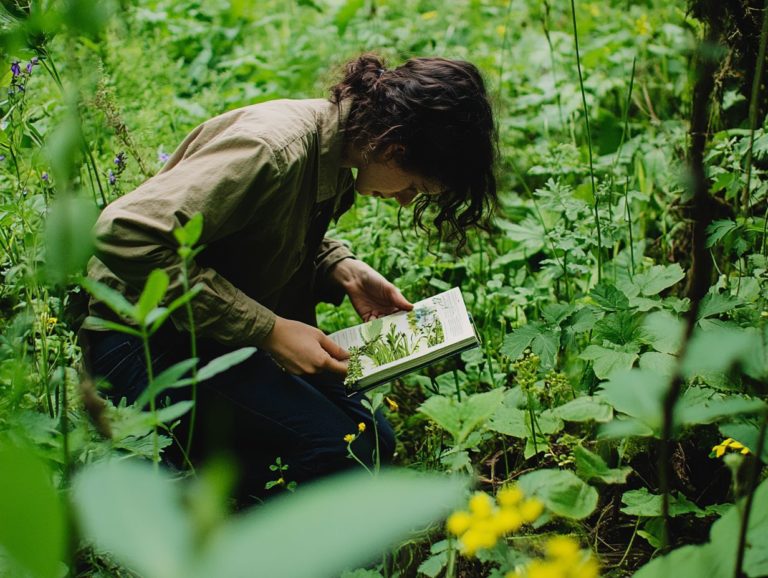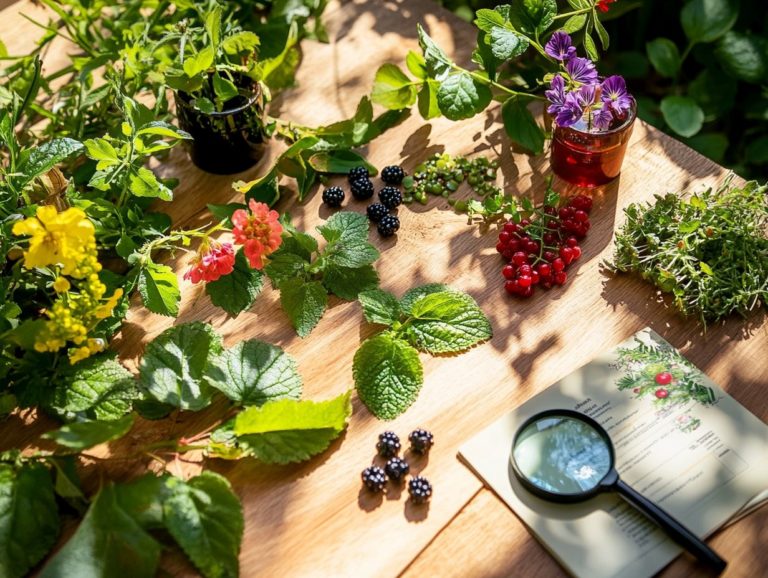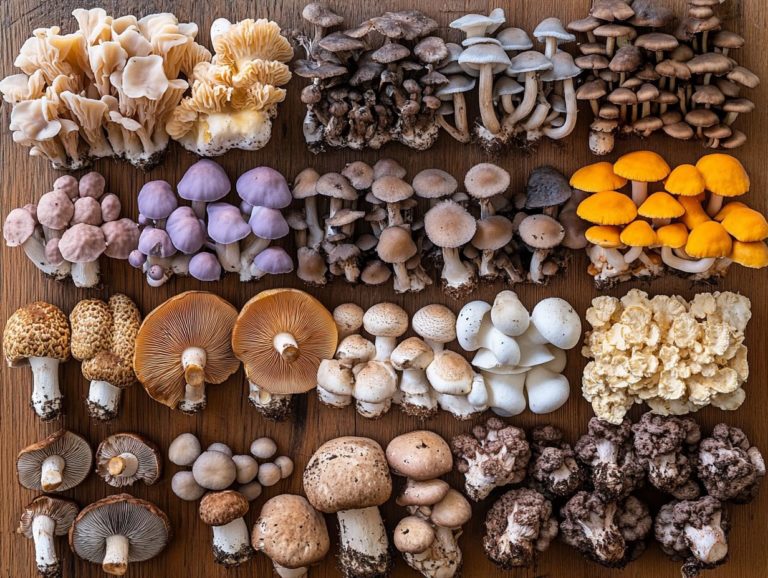5 Edible Plants to Know for Survival
In today’s world, your ability to identify and harvest edible plants can truly be transformative, whether you’re venturing into the great outdoors or preparing for unforeseen emergencies.
This article unveils five essential edible plants dandelion, cattail, chickweed, purslane, and acorns each brimming with unique health benefits that you won t want to overlook.
You ll learn how to recognize these plants, important safety precautions to consider, and tips on how to prepare them for your table.
We will highlight common mistakes to avoid when foraging and delve into these plants’ significance in survival situations.
Get ready to discover the amazing edible treasures nature has in store for you!
Contents
- Key Takeaways:
- 1. Dandelion
- 2. Cattail
- 3. Chickweed
- 4. Purslane
- 5. Acorns
- How to Identify and Harvest Edible Plants
- Frequently Asked Questions
- What are the top 5 edible plants to know for survival?
- Why is it important to know how to identify edible plants for survival?
- How can I learn to identify edible plants?
- Are there any safety precautions I should take when foraging for edible plants?
- Can I eat any part of these edible plants?
- Are there any potential health benefits to consuming these edible plants?
Key Takeaways:
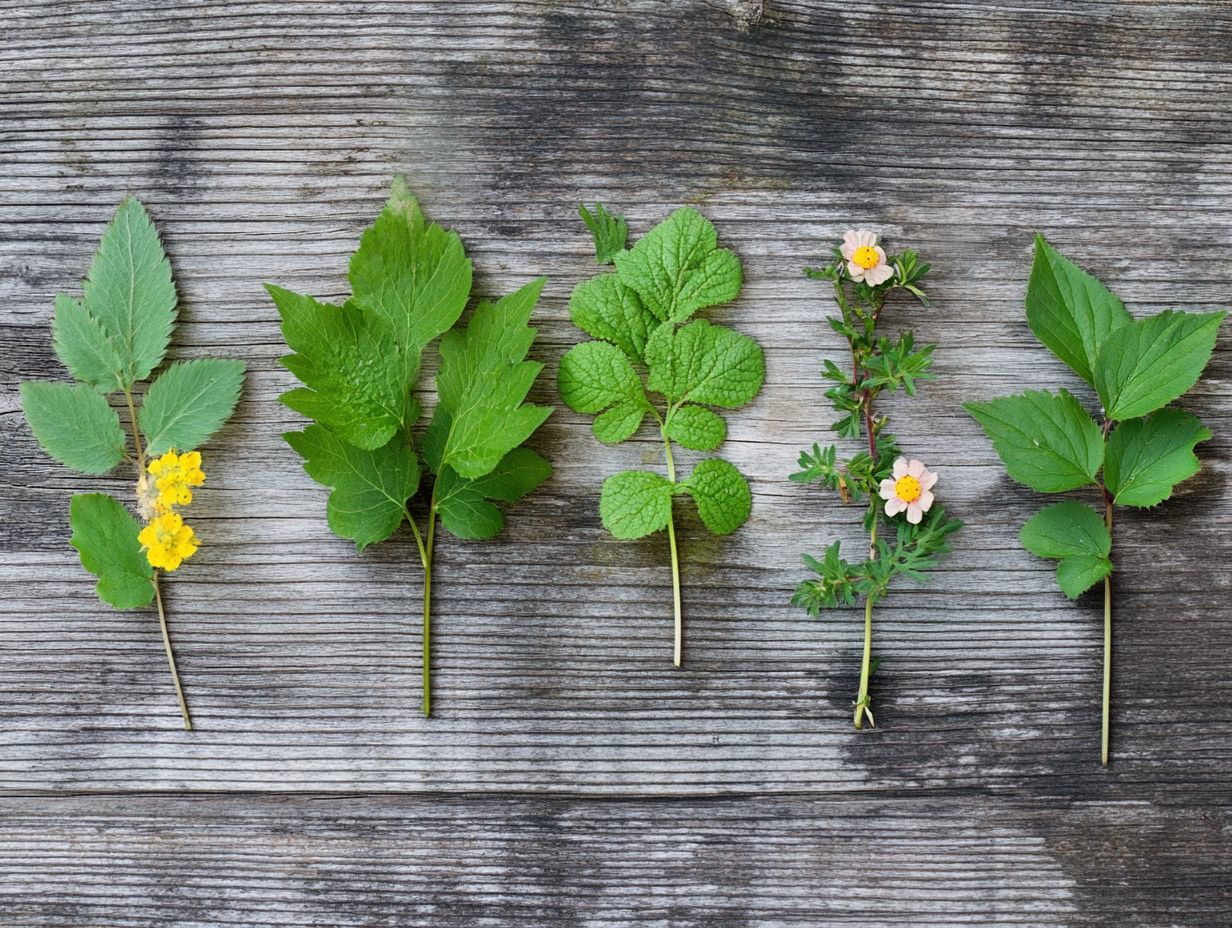
- Dandelions, cattails, chickweed, purslane, and acorns are five edible plants that can be found in the wild and provide essential nutrients for survival.
- Knowing how to identify and harvest wild plants is crucial for survival in emergencies.
- Always prepare and consume edible plants properly, taking safety precautions when harvesting them to avoid potential dangers.
1. Dandelion
Dandelions (Taraxacum officinale) thrive in diverse environments, especially across the Americas. They are not just pretty; they serve as a treasure trove of edible nutrients and vitamins, making them critical in survival scenarios where food options may be scarce.
You can enjoy their leaves, roots, and flowers through various cooking methods, showcasing their ability to be used in cooking and health benefits.
Picture this: You can toss the leaves fresh into salads for a slightly bitter yet invigorating taste. Meanwhile, those cheerful yellow flowers can be transformed into delightful dandelion wine or infused into soothing teas. Let s not forget the roots, which can be roasted and brewed as a unique coffee substitute, delivering a distinctive flavor along with notable health perks.
Packed with vitamins A, C, and K, dandelions can enhance immune function while promoting healthy skin and bone health. Incorporating these plant parts into your meals not only boosts nutritional value but also supports your overall well-being, making dandelions a truly valuable addition to any diet.
2. Cattail
The cattail (Typha spp.) is a fascinating wild plant you ll often encounter in wetlands, known for its edible parts and unique characteristics. It serves as a crucial resource in survival situations, providing essential nutrients and vitamins while being relatively easy to identify.
This versatile plant boasts tall, slender stems that can soar up to ten feet, crowned with distinctive brown cylindrical flower spikes that look a bit like hot dogs on a stick. Among its most nutritious offerings are the young shoots, which you can harvest in the spring. They have a mild, pleasant flavor.
The underground stems can be cooked and enjoyed like potatoes, while the fluffy pollen can be collected and used as a high-protein flour substitute. Identifying this plant is easy thanks to its unique appearance, making it a reliable food source in the wild.
With a bit of preparation, cattail can be a true lifesaver, providing not just sustenance but also hydration, as its stems hold a significant amount of water.
3. Chickweed
Chickweed (Stellaria media) is a delightful wild plant that thrives in gardens and fields. Mastering its identification is crucial for foragers, especially since it grows alongside some toxic plants, making accurate recognition essential before consumption.
You ll notice that chickweed typically has small, ovate leaves arranged in pairs along its slender stems, crowned with delicate white flowers featuring five deeply notched petals. As you embark on your foraging journey, distinguishing chickweed from potentially harmful impostors, like poison hemlock or other similar species, becomes vital.
Its ability to be used in cooking allows chickweed to truly shine whether in salads, soups, or various dishes, it adds a mild flavor and refreshing texture. Rich in vitamins A, C, and several B vitamins, as well as essential minerals like calcium and magnesium, incorporating this wild green into your meals can significantly elevate your nutritional intake.
4. Purslane
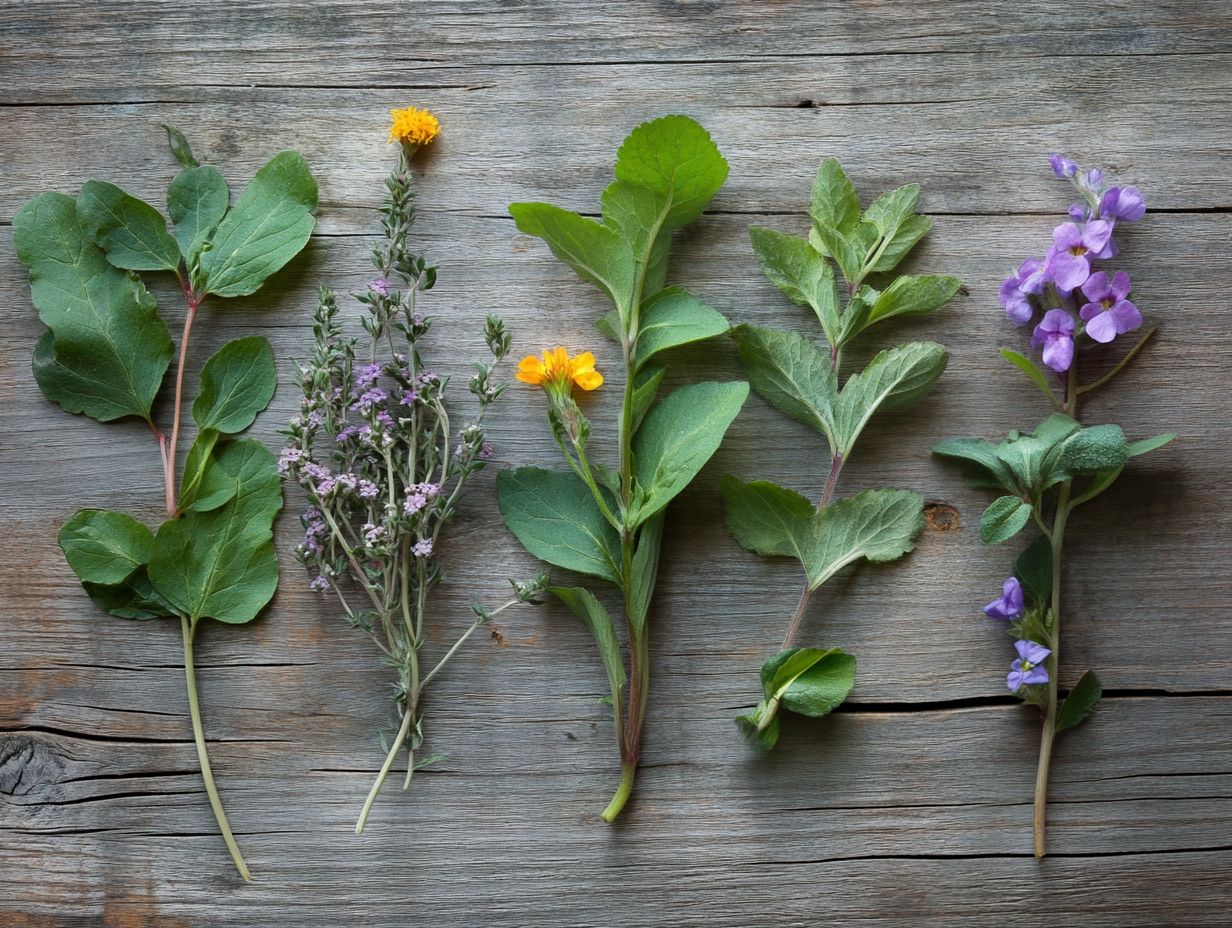
Discover the hidden gem of your garden! Purslane (Portulaca oleracea) is a succulent wild plant that you might often overlook, but it’s truly a treasure trove of essential nutrients and boasts a unique flavor profile. This makes it an invaluable addition to your list of edible plants, particularly in survival situations where maintaining nutrient intake is paramount.
What distinguishes this hardy plant is its remarkable omega-3 fatty acid content, often surpassing that of many conventional sources. You can easily incorporate purslane into your daily meals; it can lend a refreshing crunch to salads or bring a vibrant flair to soups. It can also be saut ed as a nutrient-dense side dish.
Beyond enhancing the flavor of various recipes, its rich array of antioxidants and vitamins can contribute significantly to your overall health. Regularly including purslane in your diet may lead to improved heart health and enhanced skin condition, showcasing its versatility and benefits as a remarkable addition to your culinary repertoire.
5. Acorns
Don t miss out on this nutritious treasure learn how to prepare acorns today! Acorns, those intriguing fruits of oak trees, are often hailed as a survival food. When processed and prepared correctly, they offer a commendable source of carbohydrates and essential nutrients, making them a versatile and nutritious option for those who relish foraging.
These nut-like seeds come in an array of varieties white, red, and live oak acorns each boasting unique flavors and nutritional profiles. While they’re energy powerhouses, their high tannin content compounds that can make food taste bitter means you ll need to undertake some careful leaching to make them truly enjoyable. This typically involves soaking and rinsing the acorns in water to wash away the bitter tannins.
Once you ve perfected the preparation, you can grind them into flour for baking, toss them into soups, or roast them for a delightful snack.
Integrating acorns into your diet not only enhances your nutritional intake but also connects you with traditional foraging practices. Connecting with traditional foraging practices helps you live sustainably and sparks your culinary creativity.
How to Identify and Harvest Edible Plants
Identifying and harvesting edible plants is a skill that demands your careful attention to detail and a solid understanding of plant characteristics, making proper identification essential. This becomes especially crucial in survival situations, where adhering to foraging guidelines, like knowing the 5 wild edible ingredients you shouldn’t miss, can mean the difference between avoiding poisonous plants and maximizing your nutritional intake from the wild.
Utilizing field guides and mobile apps can elevate your foraging experience, providing you with valuable insights into regional flora. These resources often come equipped with comprehensive pictures and descriptions, making it simpler to distinguish between the edible and the toxic.
Understanding key plant features like leaf shape, flower type, and overall habitat will aid in your identification efforts. For example, recognizing whether a plant prefers wet or dry conditions can significantly narrow down your options.
In terms of safe harvesting practices, always ensure you ve correctly identified plants before consuming them. Start with small quantities, and remember to respect biodiversity; take only what you need to allow the plants to thrive for future foragers.
Why not give Purslane a try in your next salad? Share your favorite recipes!
What Are the Nutritional Benefits of Edible Plants?
Edible plants, especially those that are wild and native to the Americas, offer a remarkable range of nutritional benefits. They are packed with essential vitamins, minerals, and antioxidants that play a crucial role in maintaining a balanced diet particularly when you include leafy greens and other nutrient-dense options.
Take dandelion greens, for instance. They shine with their impressive vitamin A content, which is fantastic for eye health. There are also stinging nettles, brimming with iron and calcium, making them an excellent choice for plant-based sources of these essential minerals. Don t overlook purslane, known for being rich in healthy fats that support cardiovascular health.
Incorporating these vibrant plants into your meals not only enhances the flavor but also elevates your overall nutrient intake. This makes it easier to meet your dietary needs while relishing the rich diversity that nature has to offer.
What Are the Safety Precautions When Harvesting Edible Plants?
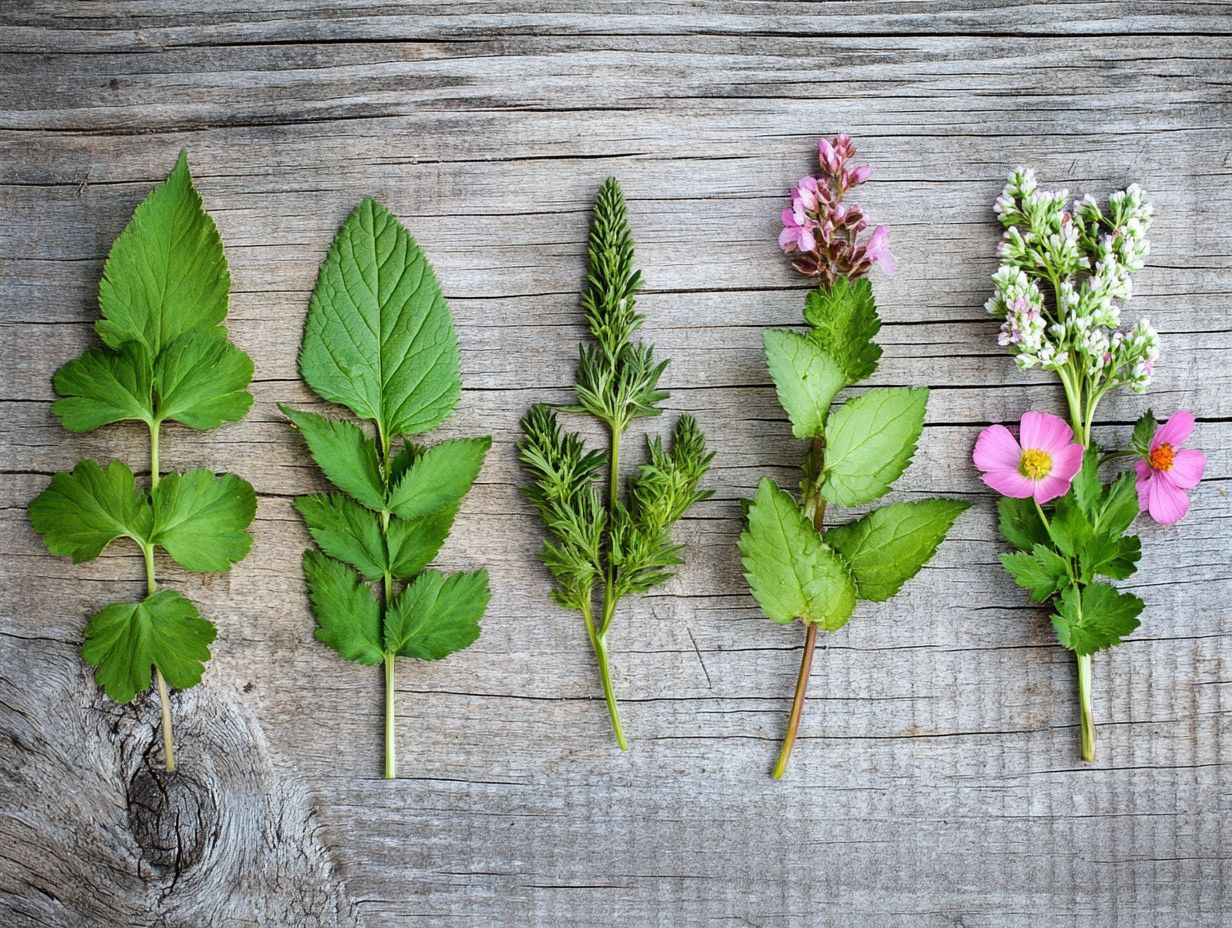
When foraging for wild plants, prioritizing safety precautions is essential. Accurate identification of each plant is crucial to avoid poisonous plants and ensure a safe gathering experience.
To achieve this, you should employ the universal test for plant identification. This systematic method helps verify your findings by examining characteristics such as leaf shape, growth patterns, and flower types. It’s vital to cross-reference multiple sources to confirm the edibility of each plant. This could involve consulting field guides or using mobile apps designed for this purpose.
As a new forager, it’s wise to avoid areas that may be contaminated, like roadsides or regions near agricultural runoff. Building confidence in foraging takes time; however, practicing in local parks with knowledgeable companions can significantly enhance your skills and comfort level.
How Can Edible Plants Be Prepared for Consumption?
Preparing edible plants for consumption can be an exciting journey. You can enjoy them raw or engage in intricate cooking methods to enhance their flavors and maximize health benefits. This opens up a world of diverse culinary experiences with wild plants.
Consider the array of methods at your disposal:
- Raw consumption is a favorite for leafy greens like kale and arugula; simply toss them into a salad to preserve their vital nutrients.
- For tougher vegetables like carrots or turnips, boiling is your ally, softening them while retaining essential vitamins.
- For delicate options such as asparagus, steaming is the perfect gentle approach, locking in both flavor and nutrition.
- If you’re in the mood for something more dynamic, saut ing adds versatility, drawing out the rich tastes in mushrooms or bell peppers especially when simmered with garlic and olive oil resulting in a savory dish that s both healthy and satisfying.
Try out these methods and discover your favorite ways to enjoy edible plants!
What Are the Common Mistakes When Identifying Edible Plants?
Common mistakes in identifying edible plants can lead to perilous outcomes. This underscores the importance of proper identification and the necessity of steering clear of poisonous varieties, as many look-alikes can pose serious risks.
As a novice forager, you might underestimate the value of reliable resources, such as field guides or specialized apps, which offer clear images and detailed descriptions of plants. It s essential to recognize that even minor variations in appearance can signal a toxic species.
Many inexperienced foragers tend to overlook the universal edibility test, a crucial step in ensuring safety before consumption. This test involves sampling small amounts of the plant and closely monitoring for any adverse reactions.
Engaging in thorough research and cross-referencing information from multiple sources about plant characteristics can be critical tools. By doing so, you not only safeguard your well-being but also enhance the enjoyment of your gathering adventures.
How Can Edible Plants Be Used in Emergency Situations?
In emergency situations, having a solid grasp of edible plants can truly be a lifesaver. Understanding the unique features of edible plants and their nutritional value provides essential sustenance when traditional food sources are scarce.
Consider species like dandelions, nettles, and clover. They’re not just abundant; they’re packed with vitamins, minerals, and protein. Foraging for wild plants, especially those detailed in 5 wild plants to forage this winter, requires careful observation. You should also know where they like to grow. Always harvest in clean areas—this is crucial for your safety! It’s vital to hone your ability to identify them accurately to steer clear of toxic lookalikes.
Once you’ve gathered your bounty, employing proper preparation methods like cooking or drying can enhance their taste and preserve their nutrients. Knowing about edible plants is like having a superpower in the wild! It enables you to respond effectively in dire circumstances and ensures you can sustain yourself with the gifts of nature.
Frequently Asked Questions
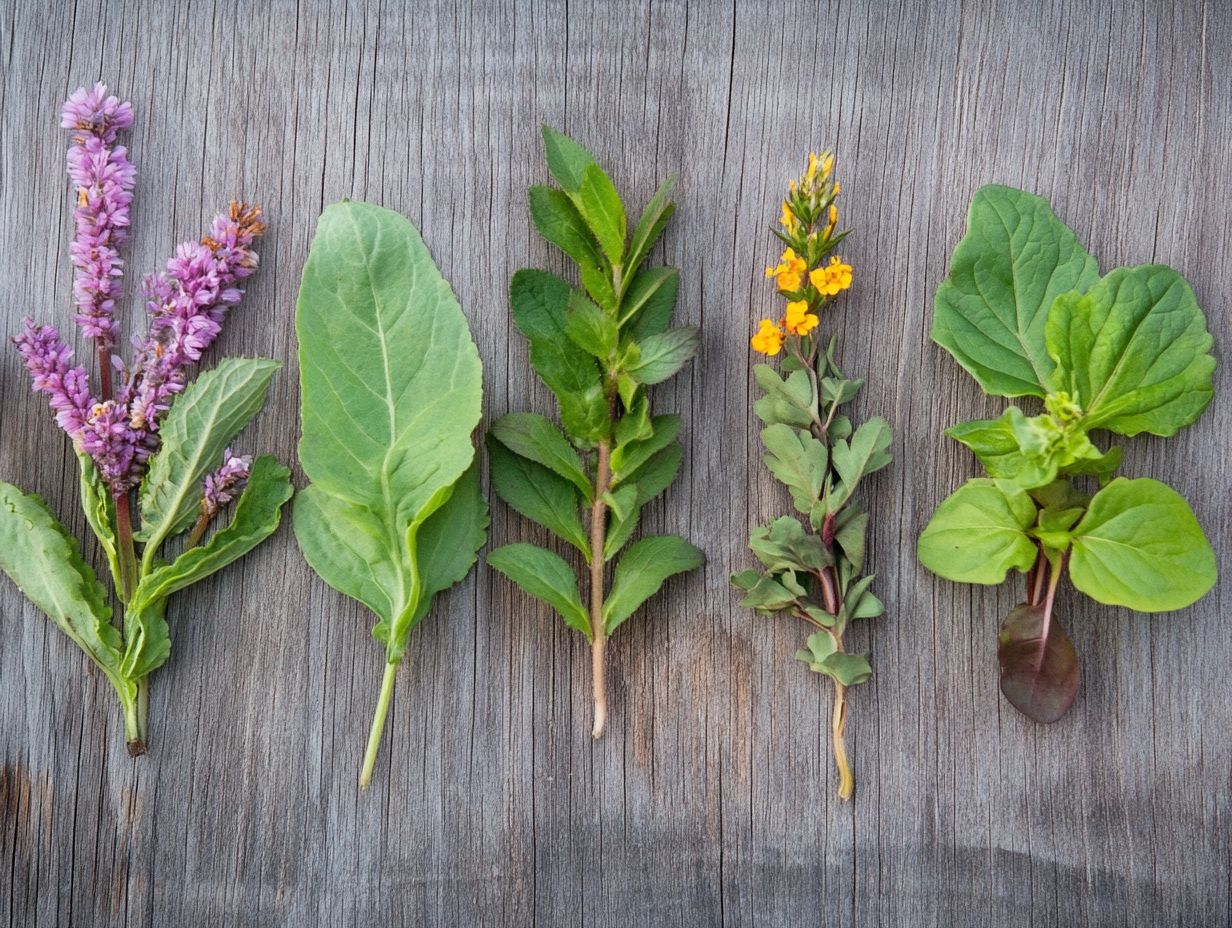
What are the top 5 edible plants to know for survival?
- Cattails
- Dandelions
- Acorns
- Chickweed
Why is it important to know how to identify edible plants for survival?
Knowing how to identify edible plants is crucial for survival, as it provides a source of food when other options are scarce or unavailable. For those new to foraging, exploring the top 5 wild edibles for beginners can be incredibly helpful.
How can I learn to identify edible plants?
You can learn to identify edible plants through research, field guides, and by seeking guidance from a knowledgeable expert.
Are there any safety precautions I should take when foraging for edible plants?
Yes, it is important to be cautious when foraging for edible plants. Always make sure you are 100% sure of the plant’s identification before consuming it. Avoid plants that have a strong smell, milky sap, or thorns.
Can I eat any part of these edible plants?
Yes, all parts of the cattail, dandelion, acorn, and chickweed plants are edible. However, it is important to properly prepare and cook these plants before consuming them.
Are there any potential health benefits to consuming these edible plants?
Yes, all five of these edible plants are rich in nutrients and can provide various health benefits such as aiding digestion, boosting the immune system, and providing a source of antioxidants. For more information, check out 5 edible wild greens to look for.

